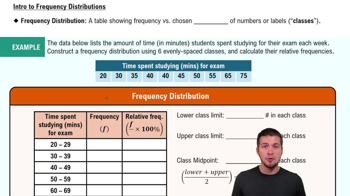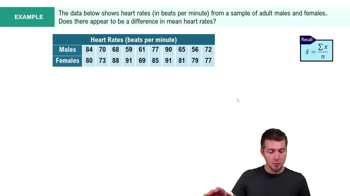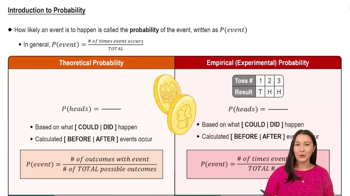Here are the essential concepts you must grasp in order to answer the question correctly.
Poisson Distribution
The Poisson distribution is a probability distribution that expresses the probability of a given number of events occurring in a fixed interval of time or space, given a known average rate of occurrence. It is particularly useful for modeling rare events, such as arrivals or occurrences, in a defined period. The formula for the Poisson probability mass function is P(X=k) = (λ^k * e^(-λ)) / k!, where λ is the average rate of occurrence, k is the number of events, and e is Euler's number.
Recommended video:
Intro to Frequency Distributions
Rate of Arrival (λ)
In the context of the Poisson distribution, λ (lambda) represents the average rate of arrivals or occurrences in a specified time frame. It is a crucial parameter that determines the shape of the distribution. For example, if we expect an average of 5 arrivals in one minute, λ would be 5. When calculating probabilities for shorter intervals, such as one thousandth of a minute, λ must be adjusted accordingly to reflect the expected number of arrivals in that brief period.
Recommended video:
Calculating the Mean Example 1
Probability Mass Function (PMF)
The Probability Mass Function (PMF) is a function that gives the probability that a discrete random variable is exactly equal to some value. In the case of the Poisson distribution, the PMF allows us to calculate the probability of observing a specific number of events, such as exactly 2 arrivals. By substituting the appropriate values of k and λ into the PMF formula, we can determine the likelihood of that event occurring within the defined time interval.
Recommended video:
Introduction to Probability






